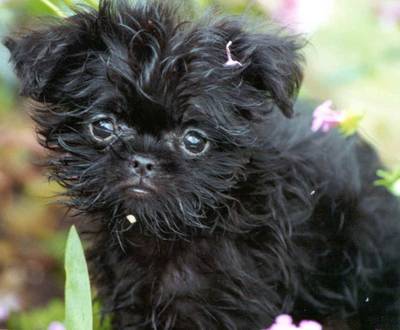 | The Information of Affenpinschers has been provided by The American Kennel Club, Inc. http://www.akc.org/breeds/affenpinscher/ The Affenpinscher (translated from German as Monkey-Terrier) is a peppy dog that has the face and impish nature of a monkey. This wire-haired terrier-like breed acts like a bigger dog as he proudly struts around. The coat of an Affenpinscher is usually black, but they also come in gray, silver, red, or black and tan. A Look Back Right Breed for You?
© The American Kennel Club, Inc. Affenpinscher Breed StandardToy GroupGeneral Appearance Size, Proportion, Substance Head Neck, Topline, Body Forequarters Hindquarters Coat Color Gait Temperament |
Afghan Hound
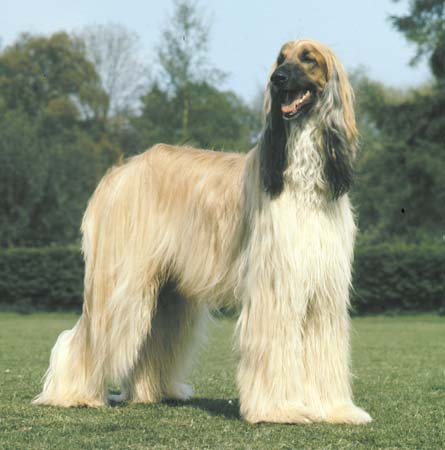 | The Information of Afghan Hounds has been provided by The American Kennel Club, Inc. http://www.akc.org/breeds/afghan_hound/ Referred to as an aristocrat, the Afghan Hound’s appearance is one of dignity and aloofness. Well covered with thick, silky hair, very fine in texture, the Afghan hound’s coat is a sort found among animals native to high altitudes. They can come in all colors, and while the breed is an excellent hound (hunting by sight) its popularity here has been generated by the breeds’ spectacular qualities as a show dog. A Look Back Known for being aloof, dignified, and for having a highly individualized personality, Afghan Hounds are prized and loved by their owners as companions and members of their family. However, it is important to take into If you are considering purchasing an Afghan Hound puppy, learn more here.
© The American Kennel Club, Inc. Afghan Hound Breed StandardHound GroupGeneral Appearance Head Neck Body Tail Legs Coat Height Weight Color Gait Temperament
|
Airedale Terrier
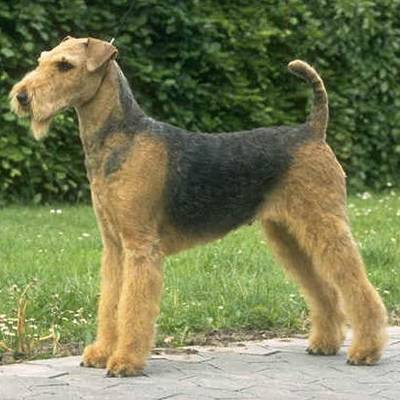 | The Information of Airedale Terriers has been provided by The American Kennel Club, Inc http://www.akc.org/breeds/airedale_terrier/ The undisputed "King of Terriers," the Airedale Terrier is the largest and hardiest of the terriers, and an all around useful dog. The breed’s coat is hard, dense and wiry, with a softer undercoat, and comes in both tan and black and tan and grizzle. This breed was one of the first used for police duty in Germany and Great Britain and has also been popular with Presidents, including Woodrow Wilson, Warren Harding and Calvin Coolidge. A Look Back Right Breed for You? If you are considering purchasing an Airedale Terrier puppy, learn more here.
© The American Kennel Club, Inc. Airedale Terrier Breed StandardTerrier GroupHead Skull
Ears Foreface Eyes Lips Nose Teeth Neck Shoulders and Chest Body Hindquarters Tail Legs Coat Color Size Movement Faults Scale of Points
|
Akita
The Japanese Akita  The American Akita 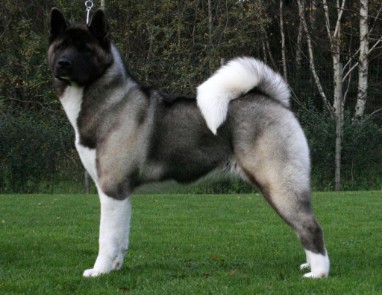 | The Information of Akitas has been provided by The American Kennel Club, Inc http://www.akc.org/breeds/akita/ Large, powerful and alert, the Akita is a working breed that originated in Japan. Dignified and courageous, the Akita today is popular in the show ring and also participates in performance and therapy work. The breed’s thick double coat can be any color including white, brindle or pinto. An Akita trademark is the plush tail that curls over his back. A Look Back Right Breed for You? Learn more about purchasing an Akita puppy.
© The American Kennel Club, Inc. Akita Breed StandardWorking GroupGeneral Appearance Neck and Body Forequarters and Hindquarters Any color including white; brindle; or pinto. Colors are rich, brilliant and clear. Markings are well balanced, with or without mask or blaze. White Akitas have no mask. Pinto has a white background with large, evenly placed patches covering head and more than one-third of body. Undercoat may be a different color from outer coat. Gait Brisk and powerful with strides of moderate length. Back remains strong, firm and level. Rear legs move in line with front legs. Size Males 26 to 28 inches at the withers; bitches 24 to 26 inches. Disqualification--dogs under 25 inches; bitches under 23 inches. Temperament Alert and responsive, dignified and courageous. Akitas may be intolerant of other dogs, particularly of the same sex. Disqualifications Partial or total lack of pigmentation on nose. Drop or broken ears. Undershot or overshot. Sickle or uncurled tail. Dogs under 25 inches; bitches under 23 inches.
|
Alaskan Malamute
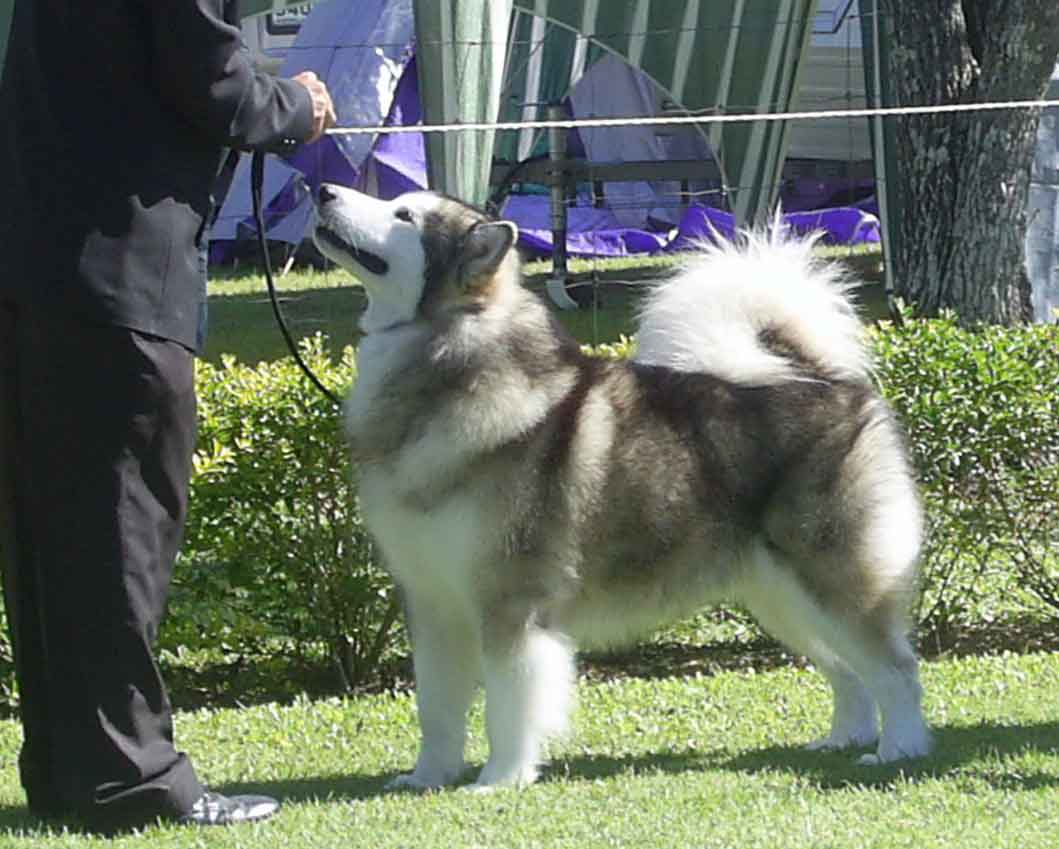 | The Information of Alaskan Malamutes has been provided by The American Kennel Club, Inc http://www.akc.org/breeds/alaskan_malamute/ The largest and oldest of the Arctic sled dogs, the Alaskan Malamute possesses great strength and endurance. He is not designed to race, but rather to carry large loads over long distances. Today, many Malamutes are family pets, but are highly athletic and still capable of enjoying sledding, weight-pulling, back-packing, jogging and swimming with their owners. The Malamute coat is thick and coarse, with a plumed tail carried over the back. The coat usually ranges in color from light gray to black or from sable to red. Face markings, including a cap on the head and a bar/mask on the face are often distinguishing features. A Look Back Right Breed for You? If you are considering purchasing an Alaskan Malamute puppy, learn more here.
© The American Kennel Club, Inc. Alaskan Malamute Breed StandardWorking GroupGeneral Appearance
The Malamute must be a heavy boned dog with sound legs, good feet, deep chest
and powerful shoulders, and have all of the other physical attributes necessary
for the efficient performance of his Size, Proportion, Substance Head The skull is broad and moderately rounded between the ears, gradually narrowing and flattening on top as it approaches the eyes, rounding off to cheeks that are moderately flat. There is a slight furrow between the eyes. The topline of the skull and the topline of the muzzle show a slight break downward from a straight line as they join. The muzzle is large and bulky in proportion to the size of the skull, diminishing slightly in width and depth from junction with the skull to the nose. In all coat colors, except reds, the nose, lips, and eye rims' pigmentation is black. Brown is permitted in red dogs. The lighter streaked "snow nose" is acceptable. The lips are close fitting. The upper and lower jaws are broad with large teeth. The incisors meet with a scissors grip. Overshot or undershot is a fault. Neck, Topline, Body Forequarters Hindquarters Coat Color Gait Temperament Summary Disqualifications
|
American Eskimo Dog
 | The Information of Alaskan Malamutes has been provided by The American Kennel Club, Inc http://www.akc.org/breeds/american_eskimo_dog/ A small to medium-size Nordic-type dog, the American Eskimo Dog is known for its A Look Back Right Breed for You? If you are considering purchasing an American Eskimo Dog puppy, learn more here.
© The American Kennel Club, Inc. American Eskimo Dog Breed StandardNon-Sporting GroupGeneral Appearance Size, Proportion, Substance Head Neck, Topline, Body Forequarters Hindquarters Coat Color Gait Temperament Disqualifications
|
American Foxhound
 | The Information of Alaskan Malamutes has been provided by The American Kennel Club, Inc http://www.akc.org/breeds/american_foxhound/ One of America’s native breeds, the American Foxhound is also one of our rarest. This tall hound sports a close, hard coat that can be any color. The Foxhound in this country is used for four purposes, thus calling for hounds of a different characteristics: competitive field trial hounds and "trail" hounds (speed is most important), fox hunting hounds (slow workers with good voices), and pack hounds (15 to 20 hounds or more, used by hunt clubs and farmers). A Look Back Right Breed for You? If you are considering purchasing an American Foxhound puppy, learn more here.
© The American Kennel Club, Inc. American Foxhound Breed StandardHound GroupHead Body Shoulders, Chest and Ribs Back and Loins Forelegs and Feet Hips, Thighs, Hind Legs and Feet Tail Coat Height Color
Scale of Points
|
